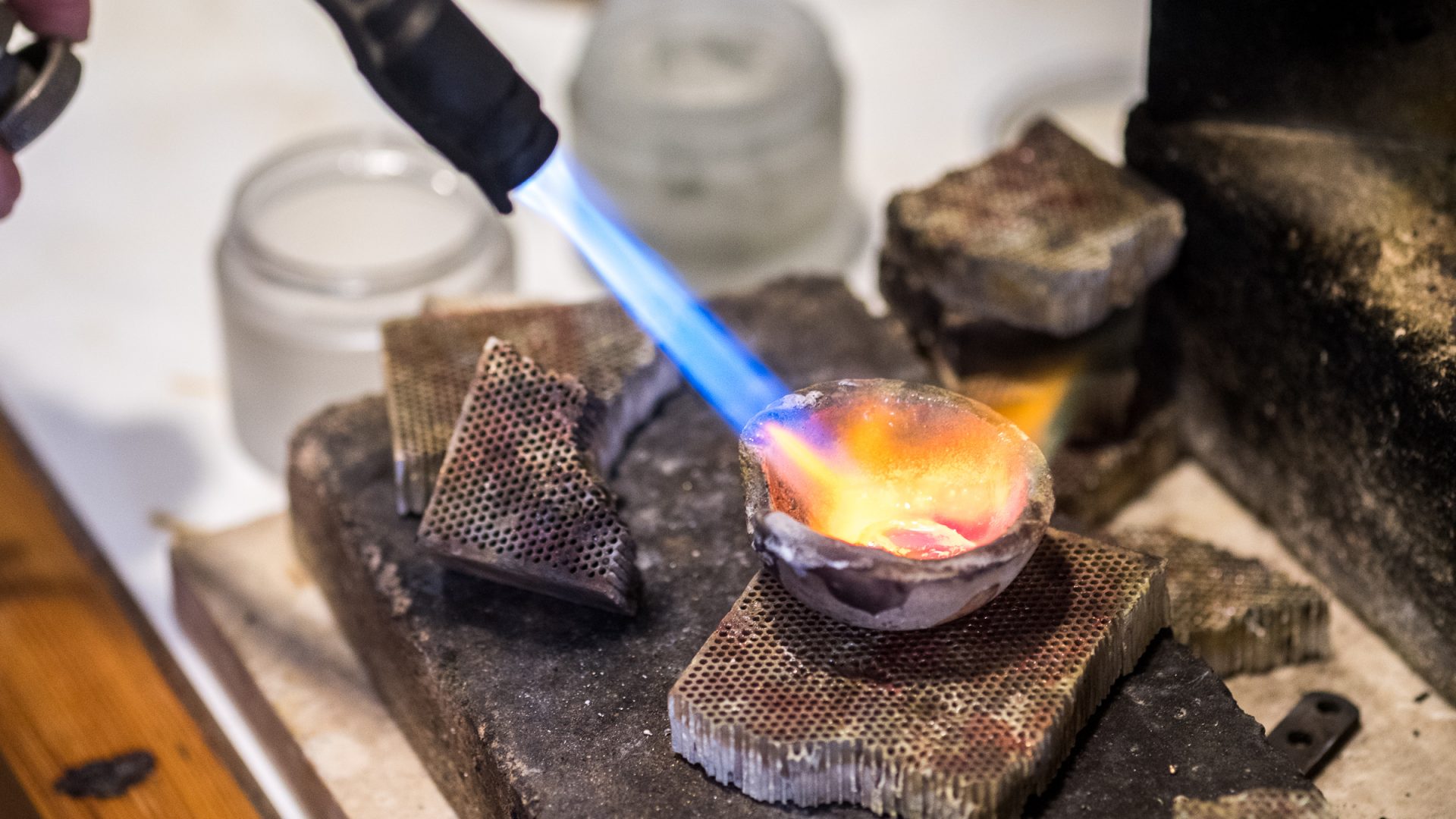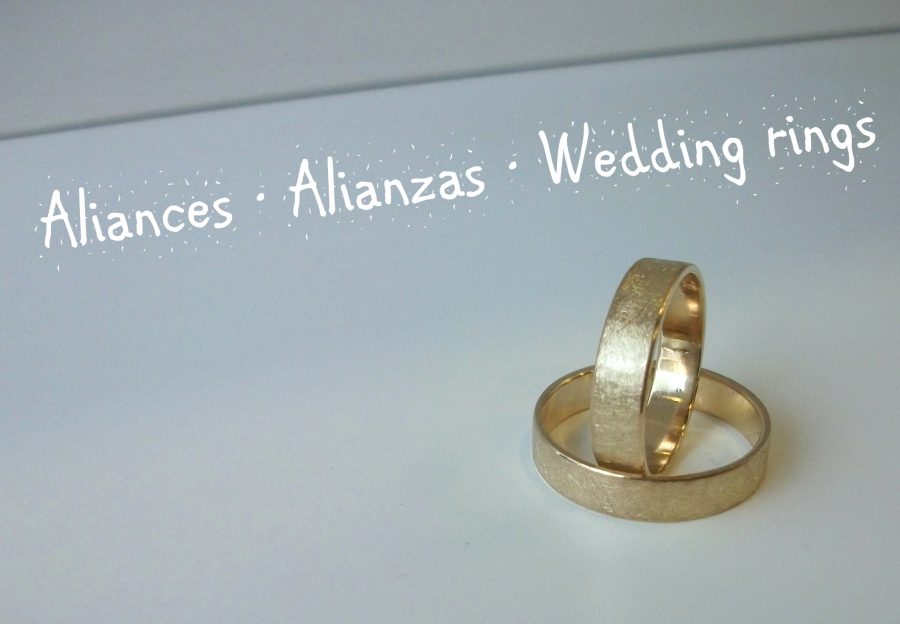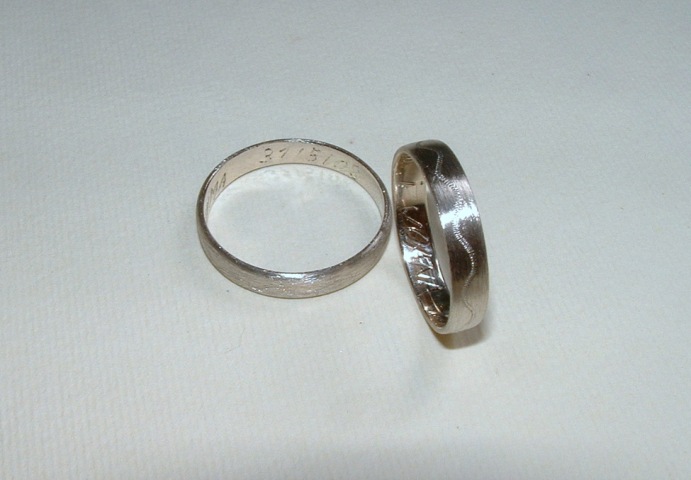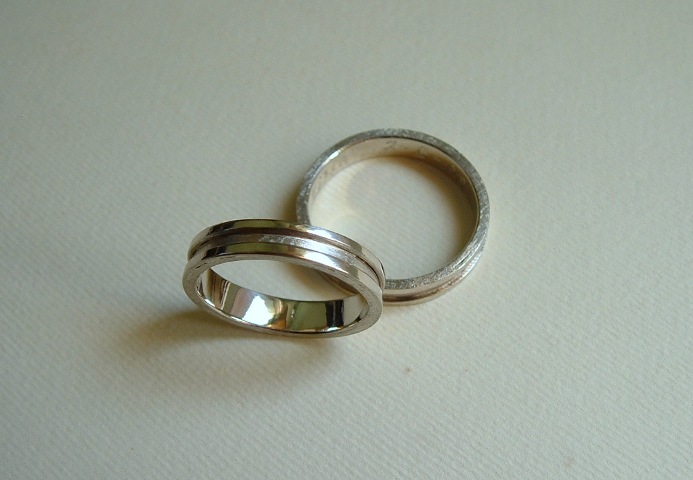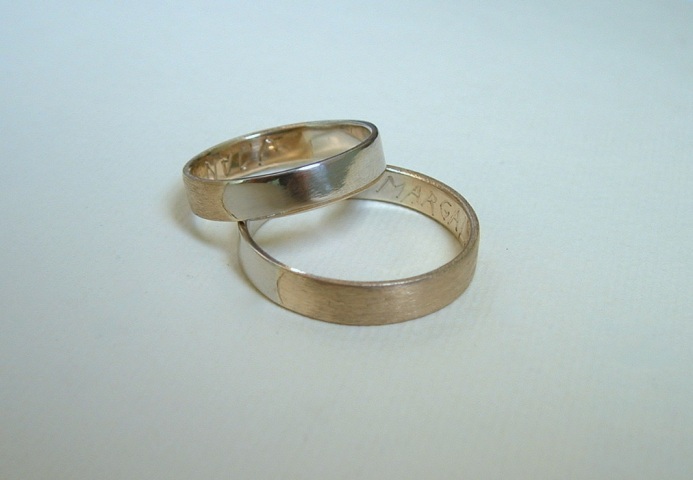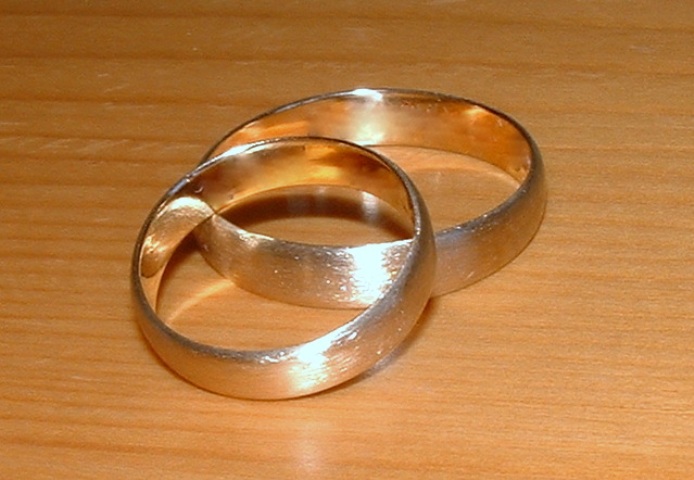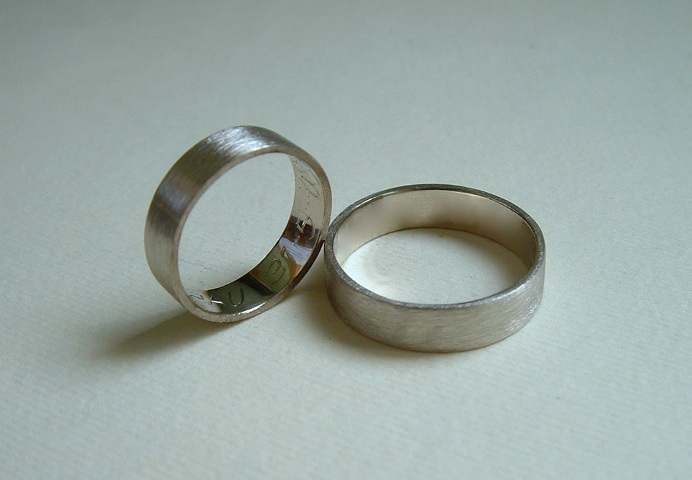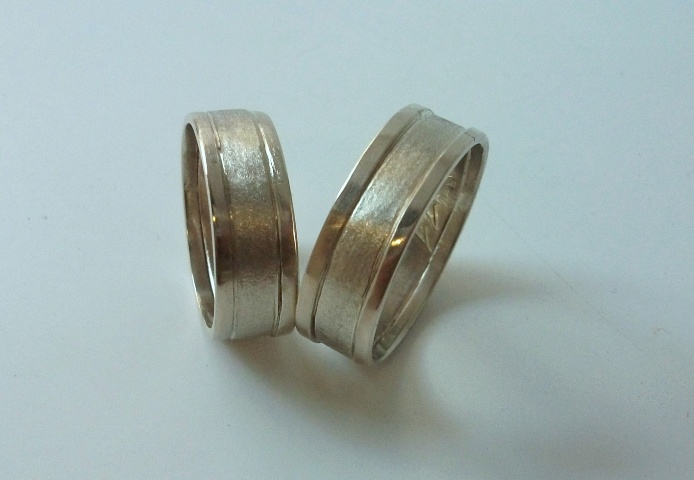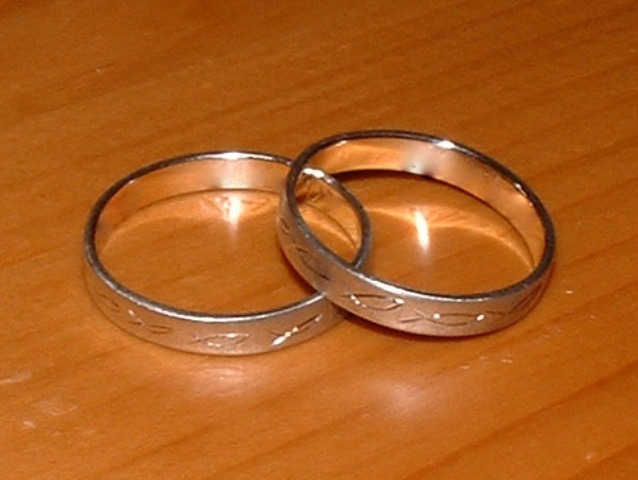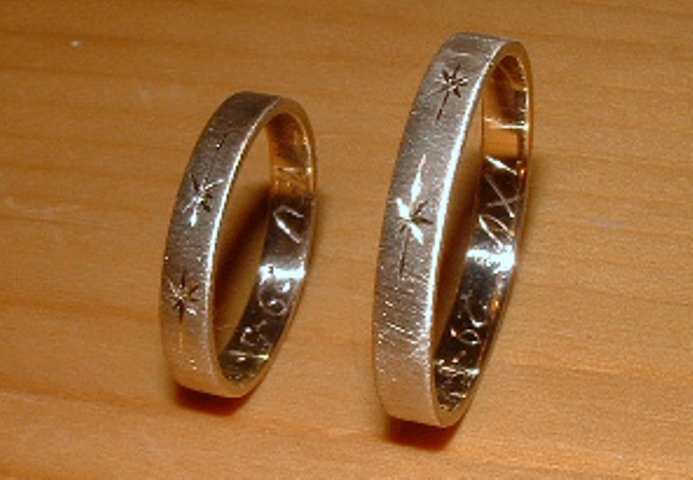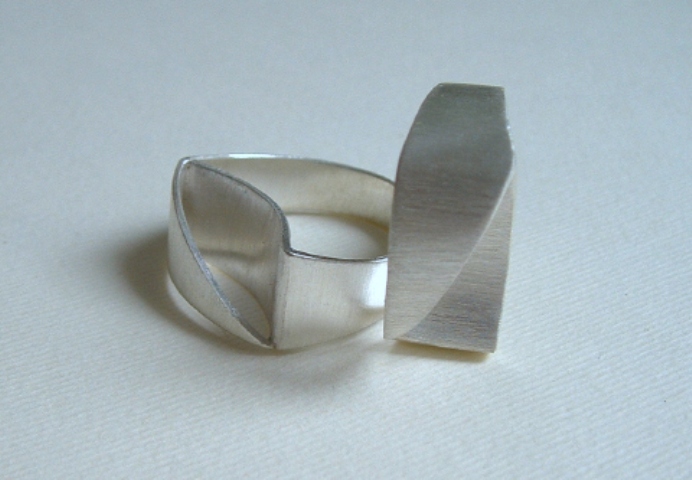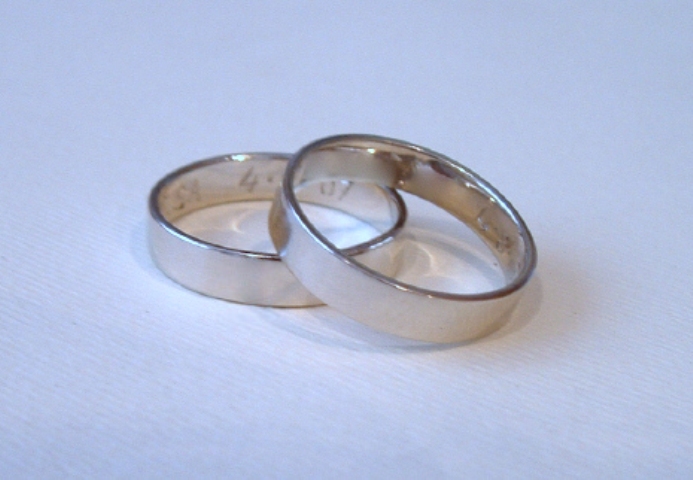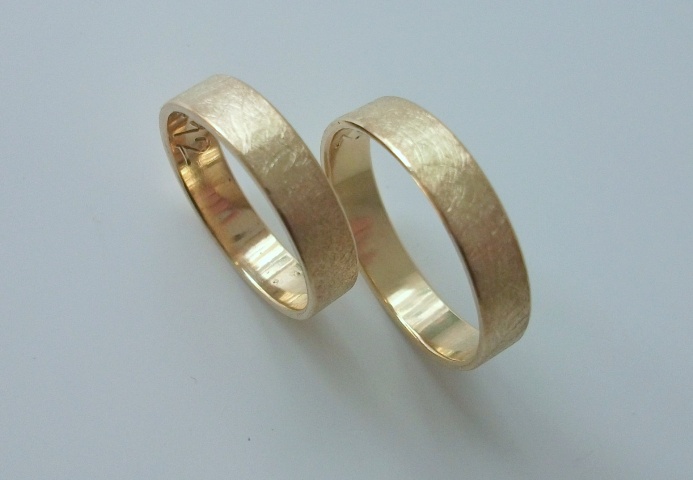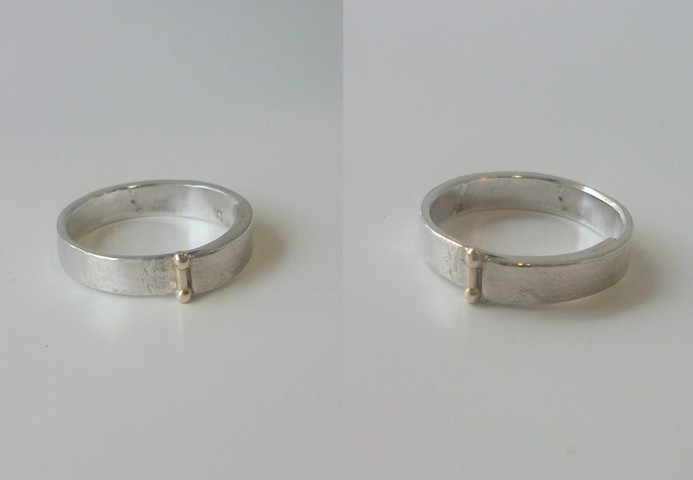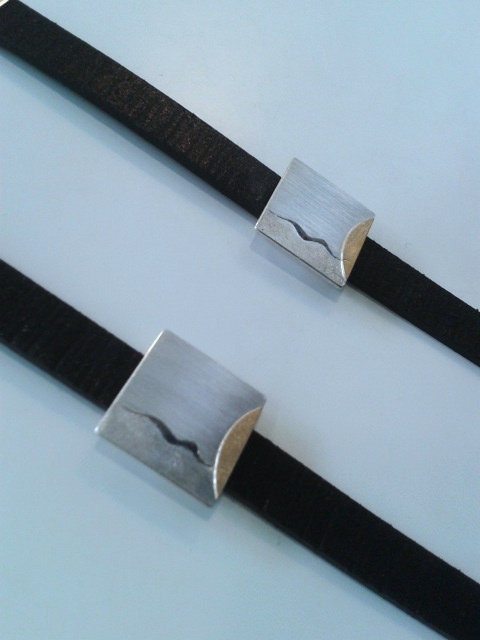These are the highlights of the process: when bride and groom arrive to the workshop, they sometimes have an idea, sometimes more that one, and sometimes… none! In this first meeting, we talk about materials, finishes, sizes,.. With all this information, I draw some sketches and accurate budgets so next time we talk or we meet, we arrive to the final idea. As easy as this!
Egyptians, 2,000 years BC, already used them as a symbol of engagement: they exchanged rings, which by their circular shape represented eternity, the infinity of their love . These rings used to be made in cloth or iron: higher social classes, had them made in gold. Each year, they renewed their commitment … and rings!
Greeks adopted this tradition but also, they thought there existed, on the ring finger, a vein coming straight to the heart, nicknamed the “vein of love”, so the alliance was worn on this finger … but this varies with each culture: the Hebrews placed the wedding ring on the index finger; in India in the thumb… here we have it in the left ring finger and elsewhere, in the right ring finger.
In Ancient Rome, the husband gave the wife when marrying his seal, not as an ornament, but for sealing household things: they assured chests, drawers and other utensils kept in the storerooms to prevent theft. Thus, the ring was a sign of the promise of marriage… while a practical element.
With the advent of Christianity, which adopted the custom of exchanging rings, despite its pagan origen, this tradition has survived to this day and has become the quintessential symbol of marriage. Gold symbolizes value and durability.
After this history brushstroke, I show you some of the wedding rings that have come out of my workshop: there are made in yellow gold, white gold, silver, silver and gold … shiny finish, matte finish, engraved,... rounded, square,… bold, classic… made to suit the client! And also, two examples of couples who, instead of exchanging rings, they decided to exchange bracelets. You decide.
.
